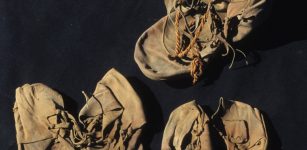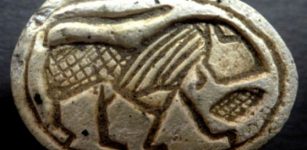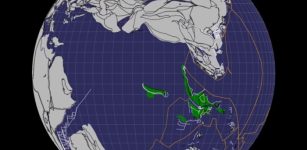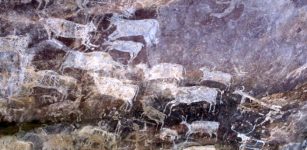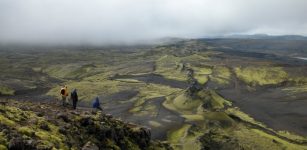Rare Ancient Jawbone Of A Denisovan Who Lived 200,000 Years Ago Discovered In Taiwan
Jan Bartek - AncientPages.com - Denisovans, an extinct group of human relatives, remain largely enigmatic despite their interactions with Neanderthals and Homo sapiens. Genomic evidence indicates that Denisovans were widely distributed across eastern Asia and possibly Oceania. However, only a few fossils from the Altai Mountains and Tibet have been definitively identified as Denisovan through molecular analysis.
The ancient jawbone found in Taiwan. Credit: Chun-Hsiang Chang.
These rare fossils are crucial for scientists to understand better the habitats, interactions, physical traits, and adaptability of these archaic humans.
In a recent study marking a significant advancement in paleoanthropology, an international team of researchers from Denmark, Japan, and Taiwan analyzed an ancient jawbone found in Taiwan. This study utilized ancient protein analysis to identify the jawbone as belonging to a male Denisovan who lived approximately 200,000 years ago.
The partial jawbone was initially discovered by fishermen in the Penghu Channel near Taiwan's coast. It was later sold to an antique shop before being purchased by a collector in 2008, who donated it to Taiwan's National Museum of Natural Science.
Although this fossil has been associated with various groups over time due to limited evidence regarding its true identity, its identification as Denisovan is pivotal for understanding this elusive species known primarily through DNA and sparse fossil records.
Over the past million years, periodic Ice Ages have played a significant role in shaping the Earth's geography by locking up large amounts of water. This process caused sea levels to drop, creating land bridges that connected islands like Taiwan to the mainland. At Penghu, these connections allowed animals such as water buffalo, tigers, and enormous straight-tusked elephants to traverse these temporary pathways.
The Denisovan jawbone was discovered near the remains of various animals, notably straight-tusked elephants. This finding provides valuable insights into the environment and ecosystem that existed during the Denisovan era. Credit: Cheng-Han Sun
Dating these events precisely is challenging due to seawater contamination affecting traditional fossil dating techniques. However, historical connections between Taiwan and the mainland occurred approximately 10,000 to 70,000 years ago and again between 130,000 to 190,000 years ago. It is reasonable to infer that fossils from Penghu date back to similar periods.
In their refined analysis of Penghu's animal remains, researchers focused on Penghu 1. Their findings revealed that many proteins shared similarities with a Denisovan rib discovered on the Tibetan Plateau (Xiahe 2), exhibiting unique signatures associated exclusively with Denisovans thus far.
Further examination of proteins in teeth provided insights into individual characteristics. Certain genes related to enamel development are located on sex chromosomes, enabling researchers to confidently identify the jawbone as belonging to a Denisovan male.
The research team speculates that thick jaws and teeth might have been specific traits among male Denisovans. However, definitive evidence remains insufficient, leaving the possibility that they were characteristic across both genders within this ancient species.
The Penghu islands at low tide. The Penghu 1 mandible was recovered from the seabed of the Penghu Channel, which was connected to the Asian mainland during glacial periods. Credit: Takumi Tsutaya.
“Identifying Penghu 1 as Denisovan confirms inferences from modern human genetics that these ancient hominins were widespread across eastern Asia and adapted to diverse environments, from the cold north to warmer, humid regions like Pleistocene Taiwan.”, says Dr. Takumi Tsutaya, Assistant Professor at the Research Center for Integrative Evolutionary Science, Graduate University for Advanced Studies, co-leading author on the paper, and leader of the Japan Science and Technology Agency FOREST project in a press release.
See also: More Archaeology News
“This discovery is crucial because it provides direct molecular evidence of Denisovans far from the initially discovered sites in Siberia and Tibet.”, adds Dr. Rikai Sawafuji, Lecturer at the Faculty of Social and Cultural Studies, Kyushu University, and co-leading author on the paper. Dr. Tsutaya and Dr. Sawafuji carried out the palaeoproteomics research of the Penghu 1 mandible while based at the Globe Institute, University of Copenhagen.
The study was published in the journal Science.
Written by Jan Bartek - AncientPages.com Staff Writer









